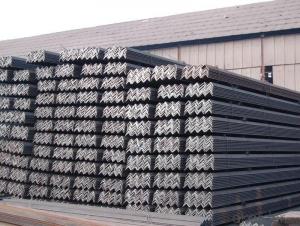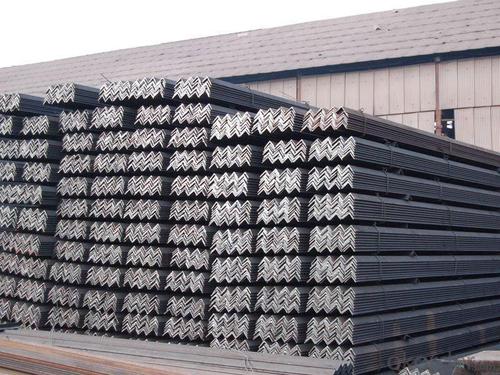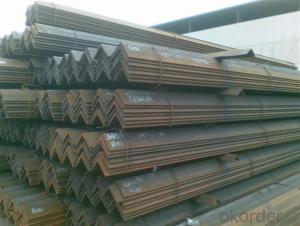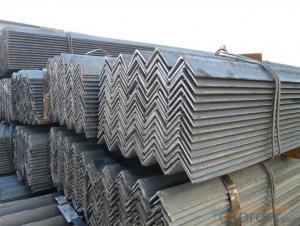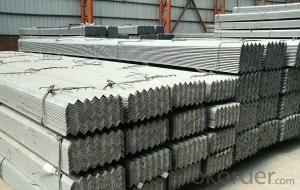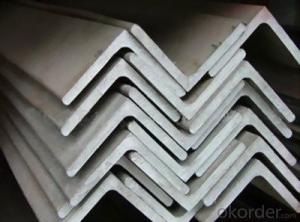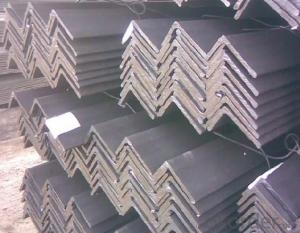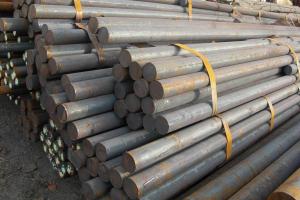Q345B Material High Quality Angle Bar
- Loading Port:
- Tianjin
- Payment Terms:
- TT or LC
- Min Order Qty:
- 25 m.t.
- Supply Capability:
- 2000 m.t./month
OKorder Service Pledge
OKorder Financial Service
You Might Also Like
Product Description:
OKorder is offering Angle Steel great prices with worldwide shipping. Our supplier is a world-class manufacturer of steel, with our products utilized the world over. OKorder annually supplies products to European, North American and Asian markets. We provide quotations within 24 hours of receiving an inquiry and guarantee competitive prices.
Product Applications:
According to the needs of different structures, Angle can compose to different force support component, and also can be the connections between components. It is widely used in various building structures and engineering structures such as roof beams, bridges, transmission towers, hoisting machinery and transport machinery, ships, industrial furnaces, reaction tower, container frame and warehouse etc.
Product Advantages:
OKorder's Angle Steelare durable, strong, and resist corrosion.
Main Product Features:
· Premium quality
· Prompt delivery & seaworthy packing (30 days after receiving deposit)
· Corrosion resistance
· Can be recycled and reused
· Mill test certification
· Professional Service
· Competitive pricing
Product Specifications:
1. Invoicing on theoretical weight or actual weight as customer request
2. Length: 6m, 9m, 12m as following table
3. Sizes
Sizes: 25mm-250mm | ||
a*t | ||
25*2.5-4.0 | 70*6.0-9.0 | 130*9.0-15 |
30*2.5-6.6 | 75*6.0-9.0 | 140*10-14 |
36*3.0-5.0 | 80*5.0-10 | 150*10-20 |
38*2.3-6.0 | 90*7.0-10 | 160*10-16 |
40*3.0-5.0 | 100*6.0-12 | 175*12-15 |
45*4.0-6.0 | 110*8.0-10 | 180*12-18 |
50*4.0-6.0 | 120*6.0-15 | 200*14-25 |
60*4.0-8.0 | 125*8.0-14 | 250*25 |
Alloy No | Grade | Element (%) | |||||
C | Mn | S | P | Si | |||
|
|
|
|
|
|
| |
Q235 | B | 0.12—0.20 | 0.3—0.7 | ≤0.045 | ≤0.045 | ≤0.3 | |
|
|
|
|
|
|
| |
Alloy No | Grade | Yielding strength point( Mpa) | |||||
Thickness (mm) | |||||||
≤16 | >16--40 | >40--60 | >60--100 | ||||
≥ | |||||||
|
|
|
|
|
| ||
Q235 | B | 235 | 225 | 215 | 205 | ||
Alloy No | Grade | Tensile strength (Mpa) | Elongation after fracture (%) | ||||
Thickness (mm) | |||||||
| ≤16 | >16--40 | >40--60 | >60--100 | |||
≥ | |||||||
|
|
|
|
|
|
| |
Q235 | B | 375--500 | 26 | 25 | 24 | 23 | |
Packaging & Delivery of Angle Bar
Packaging Detail: All goods are packed in bundle with steel strips and shipped by break bulk vessel or container (depend on target market and different ports)
Delivery Detail: 45 days
Trade terms: FOB, CFR, CIF
MOQ: 25 tons per specification; we can negotiate the quantity if the specification is normal or we have stock of one specification.
Weight: Theprice invoicing on theoretical weight basis or actual weight basis depends on customer’s request.
Shipment: The shipment of bulk break or container is depends on customer’s request and the situation of the port of destination.
Documents given: Full set of original clean on board bill of lading; Original signed commercial invoice; Original packing list; Policy of insurance; Certificate of origin and what the target market needs.
FAQ:
Q1 How soon can we receive the product after purchase?
A1 Within three days of placing an order, we will begin production. The specific shipping date is dependent upon international and government factors, but is typically 7 to 10 workdays.
Q2: How do we guarantee the quality of our products?
A2: We have established an advanced quality management system which conducts strict quality tests at every step, from raw materials to the final product. At the same time, we provide extensive follow-up service assurances as required.
Q3: How soon can we receive the product after purchase?
A3: Within three days of placing an order, we will begin production. The specific shipping date is dependent upon international and government factors, but is typically 7 to 10 workdays.
Q4: What makes stainless steel stainless?
A4: Stainless steel must contain at least 10.5 % chromium. It is this element that reacts with the oxygen in the air to form a complex chrome-oxide surface layer that is invisible but strong enough to prevent further oxygen from "staining" (rusting) the surface. Higher levels of chromium and the addition of other alloying elements such as nickel and molybdenum enhance this surface layer and improve the corrosion resistance of the stainless material.
Images:
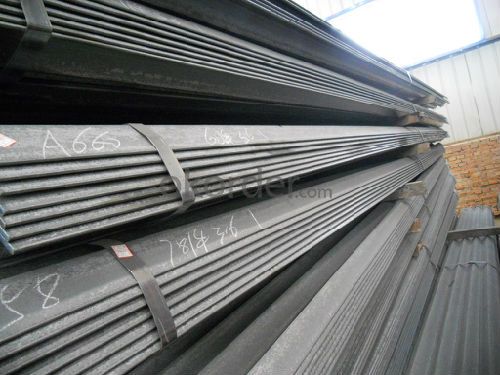
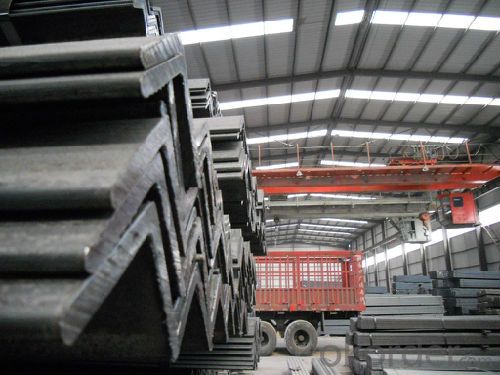
- Q: What are the different grades of steel used for angles?
- The different grades of steel commonly used for angles include A36, A572, and A588.
- Q: What are the different types of steel angles used in shipbuilding?
- In shipbuilding, there are several types of steel angles that are commonly used for various structural purposes. These angles are typically made from high-strength steel and are designed to provide strength and stability to the ship's structure. Here are some of the different types of steel angles used in shipbuilding: 1. Bulb Angles: These angles are specifically designed for use in the construction of ship hulls. They have a bulbous shape on one side, which helps in distributing the load and providing additional strength and stability to the hull structure. 2. L-Shaped Angles: L-shaped angles, also known as unequal angles, are widely used in shipbuilding for framing and bracing purposes. These angles have one leg longer than the other, allowing them to be used in various applications where different lengths are required. 3. Equal Angles: Equal angles, also known as L-sections, have two legs of equal length and are commonly used in shipbuilding for framing and supporting structures. They provide uniform strength and can be used in a variety of applications, including bulkhead framing and deck support. 4. Flat Bars: Although not technically angles, flat bars are often used in shipbuilding for similar purposes. These bars have a rectangular cross-section and are typically used for reinforcement, framing, and connecting various structural components. 5. T-Sections: T-sections, also known as T-angles, have a T-shaped cross-section and are commonly used in shipbuilding for structural framing, reinforcement, and connecting different components. The vertical leg of the T-section provides additional strength and stability to the structure. 6. Z-Sections: Z-sections, also known as Z-angles, have a Z-shaped cross-section and are used in shipbuilding for various purposes, such as framing, bracing, and supporting structures. These angles offer excellent load-bearing capacity and are often used in applications where maximum strength is required. Overall, the choice of steel angles in shipbuilding depends on the specific requirements of the structure, including the load-bearing capacity, structural design, and intended use. The aforementioned types of steel angles provide a wide range of options to meet the diverse needs of ship construction.
- Q: What are the different types of steel angles used in staircases?
- There are mainly two types of steel angles used in staircases: the L-shaped angle and the T-shaped angle. The L-shaped angle is commonly used for the construction of the stair stringers, while the T-shaped angle is typically utilized for the treads and risers.
- Q: What are the different methods of connecting steel angles together?
- There are several different methods of connecting steel angles together, depending on the specific application and structural requirements. Some of the common methods include: 1. Welding: Welding is one of the most common and effective methods of connecting steel angles. It involves melting the edges of the angles and fusing them together using a welding electrode. This provides a strong and permanent connection. 2. Bolting: Bolting is another commonly used method to connect steel angles together. It involves using bolts, nuts, and washers to secure the angles in place. Bolting provides a strong connection that is easier to disassemble if needed. 3. Riveting: Riveting is a method that involves using metal pins called rivets to connect steel angles. It requires drilling holes in the angles and inserting the rivets, which are then hammered or pressed to create a permanent connection. 4. Adhesive bonding: Adhesive bonding is a method that involves using industrial adhesives to connect steel angles. It requires applying the adhesive to the surfaces of the angles and then pressing them together. Adhesive bonding provides a strong and durable connection that is also resistant to corrosion. 5. Mechanical connectors: Mechanical connectors, such as steel clips or brackets, can also be used to connect steel angles. These connectors are designed to provide a secure and rigid connection by clamping the angles together. It is important to choose the appropriate method based on factors such as the load-bearing requirements, structural design, and environmental conditions. Consulting with a structural engineer or a professional in the field is recommended to ensure the proper method is selected for the specific application.
- Q: How do you design bracing using steel angles?
- When it comes to designing bracing using steel angles, there are several important steps to take into account. In the first place, it is crucial to ascertain the loads that the bracing will need to withstand. These loads can include vertical or horizontal forces, or a combination of both. Understanding the magnitude and direction of these forces is essential in order to design bracing that is effective. Next, it is necessary to select the appropriate steel angles. Steel angles come in various sizes and thicknesses, and the specific dimensions will depend on the desired strength and stiffness of the bracing. It is important to choose angles that can adequately resist the expected loads without experiencing excessive deflection or failure. Once the steel angles have been chosen, the bracing system must be designed to provide optimal stability. This involves determining the spacing and arrangement of the angles in order to ensure that the bracing effectively withstands the applied loads. The angles should be strategically positioned to create a stable and rigid structure. Furthermore, the connections between the steel angles and the main structural members must be designed with care. Adequate connections are crucial in transferring the loads from the bracing to the main structure. These connections should be strong, durable, and capable of transmitting both tension and compression forces. During the design process, it is also important to take into consideration any potential issues related to buckling or instability. Steel angles may be prone to buckling under certain loading conditions, and appropriate measures should be taken to prevent this. This can include adding additional bracing members, stiffeners, or using thicker angles if necessary. Lastly, it is crucial to consult relevant design codes and standards to ensure compliance with industry guidelines and regulations. These codes provide valuable guidance on the design, fabrication, and installation of steel bracing systems. To sum up, the process of designing bracing using steel angles involves determining the loads, selecting appropriate angles, designing an effective bracing system, ensuring proper connections, addressing stability concerns, and following relevant design codes and standards. By carefully considering these factors, it is possible to create a well-designed bracing system that provides the necessary support and stability to the structure.
- Q: Can steel angles be used as handrails?
- Yes, steel angles can be used as handrails. Steel angles provide strength and stability, making them suitable for use as handrails in various settings such as stairs, ramps, balconies, and walkways. They can be welded or bolted securely to provide a reliable grip and support for individuals while navigating these areas.
- Q: What are the different types of steel angles used in machinery?
- There are several types of steel angles commonly used in machinery, including equal angles, unequal angles, L-shaped angles, and T-shaped angles. These angles are used to provide structural support, reinforce joints, and facilitate the assembly of various components in machinery.
- Q: Can steel angles be used for artistic or decorative applications?
- Certainly, steel angles are highly suitable for artistic or decorative purposes. With their versatility, they can be easily manipulated and shaped, resulting in one-of-a-kind and visually captivating designs. Artists and designers can utilize steel angles to craft sculptures, decorative metalwork, brackets for decoration, as well as architectural elements. Moreover, steel angles can be enhanced aesthetically by painting, polishing, or applying various finishes. Their robustness and durability make them ideal for both indoor and outdoor artistic ventures. Furthermore, artists can create intricate and complex designs by welding or joining steel angles together. All in all, steel angles provide artists and designers with a vast array of possibilities to fashion exquisite and ornamental pieces.
- Q: What is the minimum bend radius for a steel angle?
- The minimum bend radius for a steel angle depends on various factors such as the thickness of the angle, the type of steel, and the specific application. However, generally speaking, the minimum bend radius for a steel angle is typically equal to or slightly larger than the thickness of the angle itself.
- Q: What do you mean by "corner steel plate pull knot"?
- Angle called angle, the steel strip is perpendicular to each other on both sides into the corner. There are equal angles and unequal angles. The two sides of an equal angle steel are equal in width.
Send your message to us
Q345B Material High Quality Angle Bar
- Loading Port:
- Tianjin
- Payment Terms:
- TT or LC
- Min Order Qty:
- 25 m.t.
- Supply Capability:
- 2000 m.t./month
OKorder Service Pledge
OKorder Financial Service
Similar products
Hot products
Hot Searches
Related keywords
